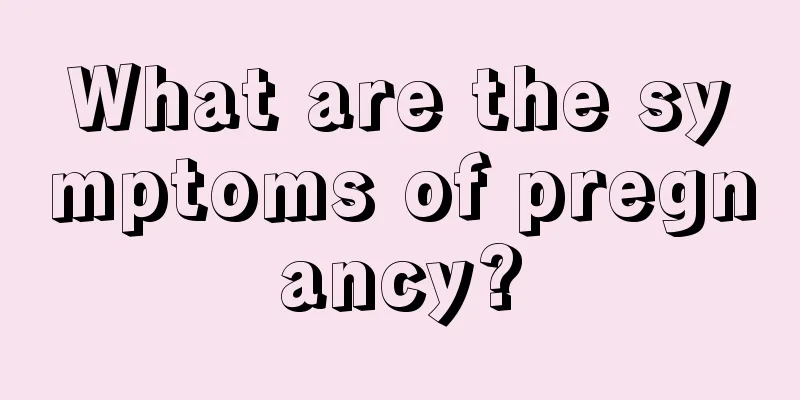Using anticancer drugs to treat "immortal cancer" may bring hope for the high-priced drugs to come down from the "altar"

|
The annual lists of Science and Nature attract the attention of the global scientific research community. In 2024, surprisingly, the same study appeared in both lists - the first successful use of allogeneic universal CAR-T cell therapy to treat autoimmune diseases. Science said that this innovative CAR-T research is expected to change the future CAR-T treatment landscape, while Nature called the Chinese scientists who led this research "brave doctors." Science publishes its Top Ten Scientific Breakthroughs "Hunting" tumor cells CAR-T, the full name of chimeric antigen receptor T cells, was originally an innovative cancer immunotherapy drug. Its design idea can be traced back to the 1980s, when scientists had recognized two core mechanisms of tumorigenesis: one is that genetic mutations within tumor cells give them the ability to proliferate indefinitely; the other is that tumor cells escape the surveillance of the human immune system through specific genetic mutations. Based on this understanding, scientists came up with the idea of transforming and activating the human immune system to re-identify and eliminate tumor cells. CAR-T therapy was born under this concept. This therapy first extracts key immune cells, T lymphocytes, from the human body, and then cleverly inserts an artificially designed protein, namely CAR, into the cell membrane of these cells. The design of CAR is extremely ingenious: the side facing the outside of the cell is a receptor that can accurately recognize and bind to specific tumor surface proteins, which gives CAR-T cells the ability to accurately recognize tumor cells; and the side facing the inside of the cell is a protein fragment that can activate the killing effect of T cells, so that once CAR binds to the tumor surface protein, the T cell can be immediately activated to kill the tumor cell. After this series of transformations, CAR-T cells are infused back into the patient’s body. These cells are like precise “hunters” that patrol the body and accurately identify tumor cells, then activate a powerful killing mechanism to treat cancer. Over the past 30 years, CAR-T therapy has undergone several rounds of iterations and upgrades, and has achieved amazing results in the treatment of certain tumors. The most praised is the successful case of patient Emily Whitehead. Emily Whitehead, the world's first leukemia patient "cured" by CAR-T In Emily's case, she was only 5 years old and unfortunately suffered from acute lymphoblastic leukemia, a difficult-to-treat blood tumor. However, at the Children's Hospital of Philadelphia in the United States, doctors provided her with a CAR-T therapy that is still in the experimental stage. This therapy is designed to target the CD19 protein, which is expressed on the surface of all B cells, including B cells that have become cancerous. By identifying and killing these B lymphocytes, CAR-T therapy successfully "cured" Emily's leukemia. Today, Emily has graduated from high school and entered the University of Pennsylvania, where CAR-T therapy was originally invented. Emily's "cure" case has brought hope to cancer patients around the world. In 2017, the U.S. Food and Drug Administration (FDA) approved two similar CAR-T drugs for marketing, marking the official entry of CAR-T therapy into the clinical application stage. Of course, like all revolutionary inventions, CAR-T drugs are not perfect and are still on the road to continuous optimization. These optimizations focus on the following directions: Can CAR-T be used to treat more tumors or other disease types, especially solid tumors such as lung cancer and liver cancer? Unlike blood cancer, solid tumors have more complex three-dimensional structures and local microenvironments. How CAR-T cells enter tumors and continue to work is a very technically challenging problem. In addition, the preparation of CAR-T drugs is currently very cumbersome and expensive. Cells need to be extracted from the patient's body for in vitro processing and then re-infused. Unmodified immune cells from other people obviously cannot be used directly, otherwise they will cause strong immune rejection. So, is it possible to prepare universal CAR-T cell drugs so that a batch of drugs can treat different patients? The major attempt of Chinese scientists to use CAR-T to treat autoimmune diseases seems to have brought hope for solving these problems. Changing the treatment landscape Epidemiological data show that autoimmune diseases affect about 8% of the world's population, and this proportion is even greater in China. These diseases are often characterized by being "difficult to treat" and sometimes even develop life-threatening complications, often referred to as "immortal cancer." Because the exact cause of the disease is unclear, existing medical treatments can only control symptoms. Using CAR-T therapy to treat autoimmune diseases, at the end of 2022, a scientific research team in the field of rheumatology and immunology in China officially began to develop a clinical trial plan. Science's introduction to the research results on the successful use of CAR-T cell therapy in the treatment of autoimmune diseases The first patient selected by the team was a female patient with immune-mediated necrotizing myopathy, characterized by muscle fiber necrosis and progressive weakness, and the second and third patients were male patients with systemic sclerosis, characterized by pain and gradual hardening of the skin. All three patients were very ill and could hardly take care of themselves. Two weeks after receiving CAR-T cell therapy, a miracle happened. The first patient regained the strength to lift his arms and comb his hair. The severe symptoms of the other two patients also began to subside. After more than 6 months, the condition of the three patients was in long-term remission. In autoimmune diseases, B cells often play a role by releasing toxic autoantibodies that attack joints, lungs, kidneys, etc. In traditional CAR-T therapy, doctors separate T cells from the patient's white blood cells. These cells are then genetically modified so that they can seek out and destroy B cells, and then sent back into the patient's body. A major feature of the CAR-T therapy used by Chinese scientists for autoimmune diseases is that these T cells do not come from patients, but from donors. Researchers use T cells from donors and edit their genes so that these CAR-T cells can kill the B cells in the patient's body that have "turned against" and attacked the patient's own body, thereby curing the disease. At present, the team has used different types of allogeneic universal CAR-T cells to treat 24 patients and achieved the expected therapeutic effect. This not only opens the door to the treatment of autoimmune diseases for CAR-T cell therapy, but is also a bold attempt to make CAR-T a ready-made product. Science magazine mentioned: "This may open a new chapter in the treatment of autoimmune diseases." And Nature magazine believes that if successful, the production of CAR-T cells using donor cells can achieve large-scale production of CAR-T, thereby reducing costs and expanding its coverage. You know, since the first CAR-T product was launched in 2017, it has been caught in a double complaint: patients say they can't afford it, and pharmaceutical companies say they can't make money. Even now, my country has a number of CAR-T cell therapy products, but the price is still at the million-yuan level, which is an astronomical figure for most families. Pharmaceutical companies cannot compromise or make concessions on drug prices because even with such high prices, it is still a loss-making business. Because CAR-T products used to treat cancer must be "customized", autologous CAR-T requires the collection of T cells from each patient, so each patient needs a separate production line, and the finished product is limited to the patient's own use. In terms of production and preparation, after the collected patient T cells are transported to the product preparation base, they must go through strict quality control and quality inspection steps to ensure that they meet the transfusion standards. This is why all CAR-T products are relatively expensive. To solve this dilemma, CAR-T cell drugs can only move from "personal customization" to "mass production". The successful results of Chinese scientists using allogeneic universal CAR-T therapy to treat autoimmune diseases have undoubtedly brought hope for the mass production of CAR-T products and given patients new hope for treatment. |
Recommend
Brown bleeding in early pregnancy
In the early stages of pregnancy, pregnant mother...
Dating requires IQ, staying up late will make people stupid
One minute with the doctor, the postures are cons...
Darkening of the inner thighs of women
The main reason why the inner side of the skin be...
Facebook: 2Q17 Monthly Active Users of Its Products Exceed 2.7 Billion
According to the 2Q19 financial report released b...
Can I have a curettage if my menstruation continues?
A normal menstrual period lasts about a week. Too...
Can gardenias be grown outdoors in winter? How to grow gardenias well?
Gardenia is very common in life. Many people like...
What should women eat in the morning to help lose weight?
Losing weight has become an eternal topic, and ma...
If you suddenly have no milk, you can remedy it by doing this
The sudden absence of milk or the sudden decrease...
Can irregular menstruation cause infertility?
Due to the pressure of life and work as well as o...
Can a young uterus get pregnant?
There are many reasons for an immature uterus. Ex...
How to detect uterine prolapse
Uterine prolapse is also called uterine prolapse....
Withdrawal Bleeding Color
Women's menstrual period is a very regular ph...
Reasons for progesterone drop at 7 weeks of pregnancy
The decrease in progesterone in the 7th week of p...
Can I shave my pubic hair?
Like men, women will start to grow pubic hair on ...
What medicine can I take to get my period right away?
Every woman will encounter the problem of delayed...









